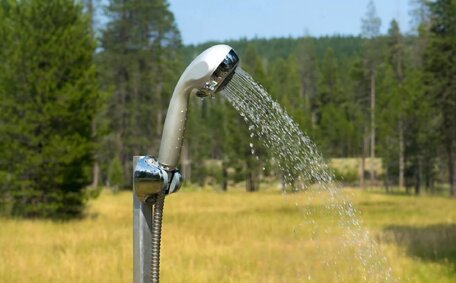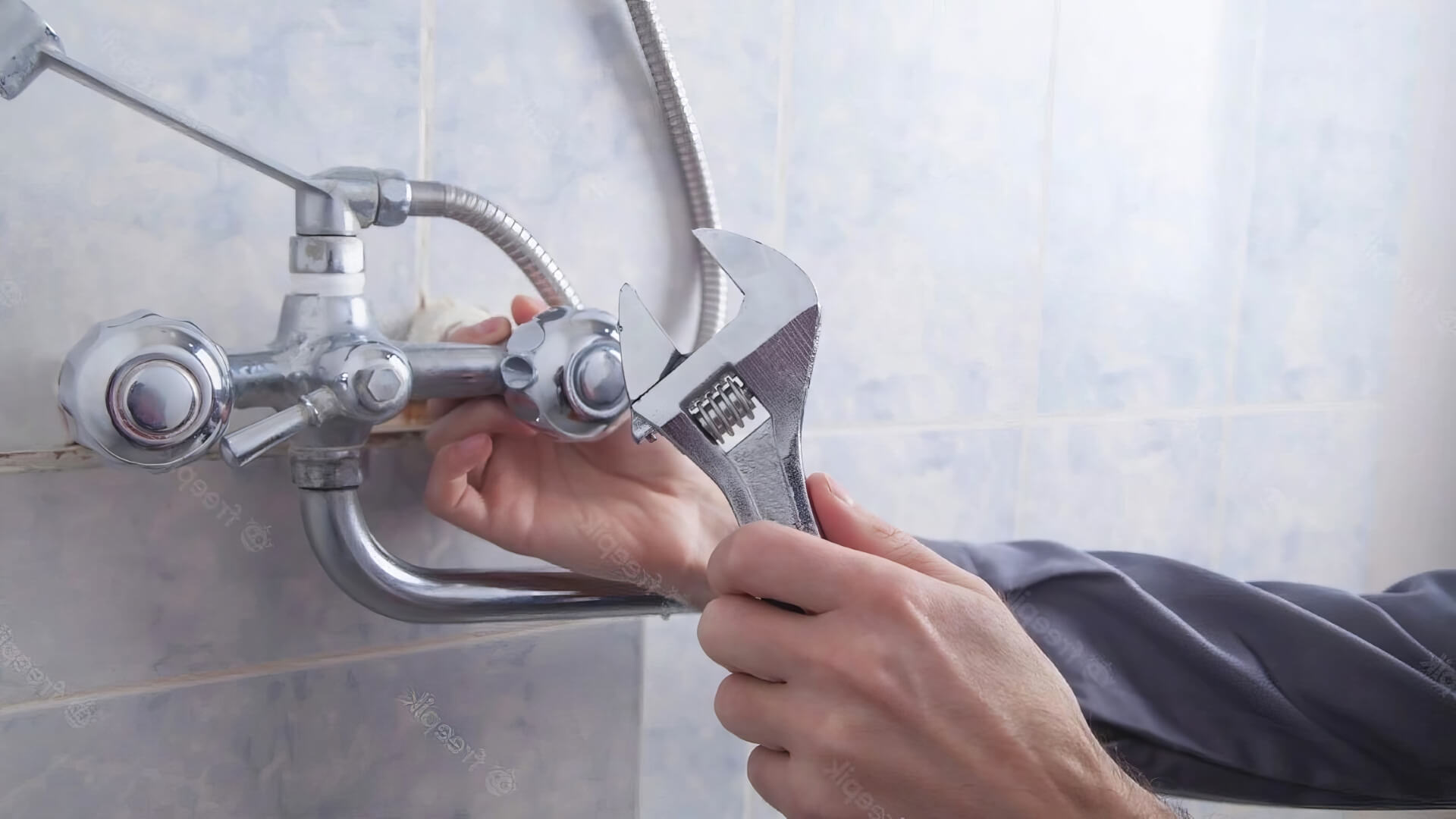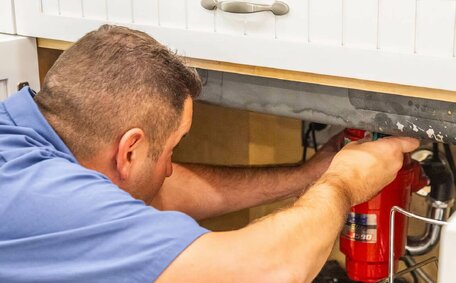Shut Off the Water Immediately
The most crucial first step when a pipe bursts is to immediately shut off the main water supply to your home. The most crucial first step when a pipe bursts is to immediately shut off the main water supply to your home.
This will stop additional water from continuing to flow out of the broken pipe, mitigating further damage.
Locate the main water shut off valve, which is usually near the front of the house, in the garage, basement or utility area. Locate the main water shut off valve, which is usually near the front of the house, in the garage, basement or utility area.
Make sure everyone in the home knows where it is. The keyword 'shut off’ is key here.
Water damage from burst pipes in homes averages over $5,000, so timely shut off can make a big difference. Once the water supply is stopped, you can begin the process of draining pipes, inspecting damage, and contacting a professional plumber to make repairs.
Turn Off Electricity to Affected Areas
It is also crucial to turn off electricity to any areas affected by the burst pipe as soon as possible. This safety step helps prevent electrocution or electrical fires which could be caused by water contacting wires, outlets or electrical appliances.
Be sure to locate your home’s main electrical panel and switch the main breaker to the 'off’ position. This will deactivate all the electricity in the home. Then, flip individual breakers to 'off’ for any rooms or circuits where water has leaked to eliminate power in those specific areas.
Keyword 'turn off’ and 'electricity’ are essential here. Water is an excellent electrical conductor, so leaving power on with leaking water can be extremely hazardous. Don’t take risks - shut down electricity quickly until repairs are made and all standing water has been dried.
In flooded areas, only turn power back on once a qualified electrician has inspected and given the all-clear. Rushing to restore electricity before proper safety checks could result in serious injury or property damage. Always put safety first.
Locate and Assess the Damage
p>p>p>p>p>p>p>p>p>p>p>p>p>p>p>
Contact a Professional Plumber
When a pipe bursts, it’s crucial to contact a professional, licenced plumber as soon as possible. Trying to fix burst pipes yourself can be dangerous and often exacerbates the problem. Here’s why you should call the experts:
- Expertise: Professional plumbers have the skills, experience and proper equipment to correctly diagnose issues and make repairs. They know how to safely shut off water, locate the burst, and fix it properly so it won’t happen again.
- Speed: Plumbers can arrive quickly to begin remediation. The faster the pipe is fixed, the less water damage will occur in your home.
- Insurance: Many plumbers like Penrith Plumbing have insurance coverage so if anything gets damaged during repairs, you’re protected.
- Warranties: Plumbers often provide warranties on parts and labour. This guarantees the repair job against defects.
- Codes: Plumbers are familiar with local building codes and standards to ensure repairs are up to code.
Don’t attempt risky DIY fixes. The keyword 'plumber’ is key here.
Calling a professional plumber as soon as possible after a burst is crucial. Companies like Penrith Plumbing have the proper tools, qualifications and experience to handle burst pipes safely and effectively.
Remove Standing Water
Once the water supply is shut off, an essential next step is to remove any standing water left from the burst pipe. It’s crucial to get rid of excess water as quickly as possible because it can cause secondary damage if left alone.
Use a wet/dry vacuum, mops, towels, and buckets to soak up the standing water. Be thorough and check under appliances, furniture, cabinets, and in wall crevices for hidden pockets of water. Look for damp spots on walls or soft/bubbling drywall and poke holes at the bottom to drain trapped moisture.
The key phrases 'remove standing water’ and 'water leak’ are important here. Eliminating all visible moisture helps speed the drying process so repairs can begin. It also prevents the growth of mould, mildew and bacteria which thrive in damp conditions.
If there are carpets or porous furnishings soaked by the burst pipe, remove and discard them. Water can remain trapped under carpet padding for a long time. Pull up any wet sections to expose the subfloor and allow it to fully dry out.
Don’t neglect to check the basement, crawlspace and attic for water accumulation. Lingering moisture in a burst pipe incident can lead to serious long-term issues if left unaddressed. Be vigilant in completely removing all standing water.
Take Photos and Document Damage
It’s crucial to thoroughly document any water damage from a burst pipe with photos and written notes. This provides important evidence for insurance claims and ensures you get fully compensated for the cost of repairs and losses.
Take clear, close-up photos of all water-affected areas - walls, floors, ceilings, furniture, etc. Don’t just take a few quick shots - comprehensive photo documentation is key.
Capture images showing the full scope of the damage. Date and time-stamp the photos for reference.
photos, make detailed written notes of the damage. Include approximate measurements and quantities when possible. photos, make detailed written notes of the damage.
Identify affected rooms and list specifics like soggy drywall, warped wood flooring, stained upholstery, etc.
Having thorough visual evidence and documentation makes filing insurance claims much easier. Insurers need proof of the damage to process payouts for repairs. Photos also establish a timeline of damage progression in case issues like mould develop later. Keep all documentation in a secure place, like online storage.
Don’t neglect this crucial step. Quality photos and detailed damage notes provide the proof needed to get compensation for burst pipe damage. Be sure to contact your insurer right away - phone, email or set an appointment to start your claim.
File an Insurance Claim
Filing an insurance claim is an important next step after experiencing burst pipe damage. Contact your insurance company as soon as possible to start the claims process. Have your policy number handy along with all documentation and photos of the damage.
Tell your insurance agent the date and time the pipe burst occurred, as well as details of the resultant damage - water stains on drywall and flooring, damage to furniture and belongings, etc. Provide copies of repair estimates you’ve obtained.
Comprehensive homeowners insurance usually covers burst pipe damage, less any applicable deductible. Make sure to ask what’s covered under your policy and any limits. Keywords 'your insurance’ and 'burst pipe’ apply here.
If the burst pipe caused damage to neighbours’ property, your insurance may cover their losses as well. Don’t delay filing a claim, as most policies have a time limit to report damage.
Work cooperatively with your insurance adjuster and provide any additional documentation they request. Be patient as processing claims can take time.
Having robust insurance when an unexpected pipe burst occurs helps cover the costs of water removal, repairs, replacements and temporary accommodations if needed. Don’t hesitate to use insurance to protect your home.
Prevent Future Burst Pipes
There are several preventative measures you can take to help avoid burst pipes in the future. Properly insulating your pipes is crucial to prevent freezing and breaks during cold weather. Use foam, rubber, or fibreglass wrap around at-risk pipes in basements, attics, garages, and exterior walls.
It’s also essential to maintain a consistent thermostat temperature, even when away from home. Set it no lower than 55°F to keep indoor spaces and pipes from freezing. Consider installing a programmable thermostat.
Keywords like 'burst water pipe’ and 'frozen pipes’ apply here. In very cold climates, allow faucets to drip slightly to prevent pipes from freezing. Make sure to disconnect garden hoses during winter.
Routinely check for leaks and repair drips or cracks in pipes promptly. Address signs of excessive water pressure which can lead to bursts. Ensure sprinkler systems and outdoor pipes are properly drained and winterized.
Inspect pipe joints for gaps and reseal with caulk if needed. Check that insulation is intact on hot water pipes. Consider repiping old, damaged lines.
Take preventative measures now to help avoid costly, damaging burst pipes down the road. Regular maintenance and vigilant monitoring of your plumbing can prevent future issues.
Consider Additional Insurance Coverage
p>p>p>p>p>p>






